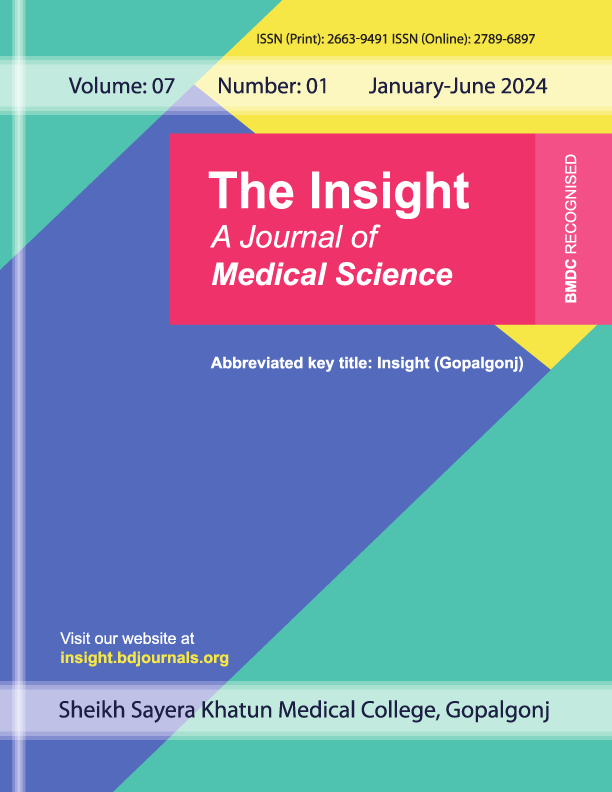Evaluation of Functional and Radiological Outcome of Proximal Tibia Fractures using Illizarov Technique
Published 15-11-2024
Keywords
- Proximal Tibial Fractures,
- Ilizarov Technique,
- Fracture Union,
- Functional Outcomes,
- Schatzker Classification
- Pin-site Infection,
- Early Mobilization ...More
Copyright (c) 2024 The Insight

This work is licensed under a Creative Commons Attribution 4.0 International License.
How to Cite
Abstract
Introduction: This study evaluated the functional and radiological outcomes of managing complex proximal tibial fractures using the Ilizarov technique in a Bangladeshi population, highlighting its effectiveness in promoting bone healing and early mobilization. Methods & Materials: This prospective observational study was conducted at Uttara Adhunik Medical College Hospital, Dhaka, Bangladesh from July, 2022 to June, 2023. Patients were treated using the Ilizarov circular external fixator following a standardized protocol. Functional outcomes were assessed using the HSS Knee Score, while radiological outcomes were monitored through routine follow-ups at 6 weeks, 3 months, 6 months, and 12 months. Statistical analysis was performed using SPSS software version 26. Results: The majority of patients were male (68%) and aged between 31 and 45 years (30%). Schatzker Type II fractures were the most common (25%). Successful union was achieved in 95% of cases, while 5% experienced non-union. Complications included pin-site infections in 20% of patients, malunion in 7%, and deep infections in 3%. Functional outcomes at the 12-month follow-up showed that 60% of patients achieved excellent results, 25% good, 10% fair, and 5% poor. The majority (65%) of patients experienced fracture healing within 3 to 6 months, with significant improvements in functional outcomes over time (p-value < 0.05). Conclusion: The Ilizarov technique offers a highly effective treatment option for proximal tibial fractures, demonstrating high union rates and favorable functional outcomes. While complications such as pin-site infections remain a concern, proper management can mitigate these risks, highlighting the technique’s value in complex fracture management.



